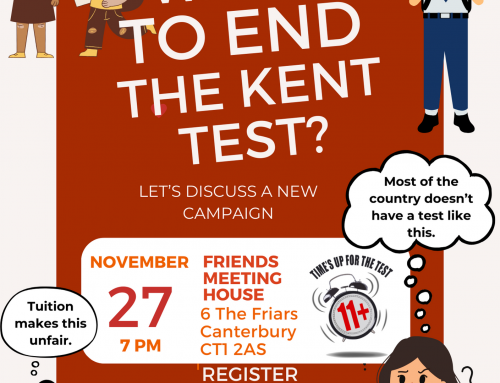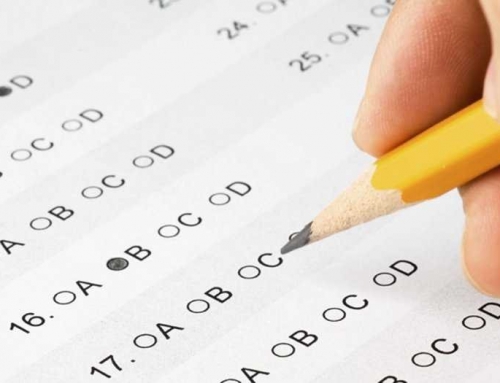Speakers
Dr Bethan Marshall, Kings College
Vanessa Everett Headteacher, Mascalls School, Paddock Wood, Tonbridge
Ian Bauckham, Headteacher, Bennett Memorial School, Tunbridge Wells
Katy Simmons, Chair of governors of a High Wycombe secondary school
Graeme Hitchen, parent governor Skipton
Chair Demitri Coryton, Editor Education Journal
Dr Bethan Marshall
The effects of selection
- International comparisons – Southampton Study using PISA data shows that the greater the selection the more social disparity particularly when pupils are divided into vocational and academic tracks.
- National comparisons – York Study shows that selective areas have a considerably higher disparity between high and low achieving schools and a higher proportion of failing schools.
- School level – study by Jo Boaler who tracked pupils over 10 years. Her study indicated that the social mobility of comparable pupils who had been taught in mixed ability settings was considerably greater than those who had been taught in sets by ability.
The cumulative effect of these studies indicates that a selective system clearly affects the life chances of all pupils and affects the socially disadvantaged disproportionally negatively.
Summary of the Assessment reform group’s publication on the effects of testing on motivation based on a detailed examination of 19 studies.
Effects on pupils
- There is a correlation between self-esteem and achievement.
a) Low achievement leads to low self-esteem: ‘One impact of the test [National curriculum tests] was the reduction in self-esteem of the pupils who did not do well.
b) This is compounded by the fact that the tests assess a very narrow range of skills. Pupils whose talents lay outside the domain of the tests had ‘a low opinion of their capabilities.’
‘The effect is to widen the gap between low and high achieving pupils.’
The impact of tests was particularly strong in Northern Ireland. (see also the Queen’s University study which highlights the unreliability of the 11+)
It detracts from the importance of learning on improvement. Pupils tend to attribute success or failure to external sources including innate ability or luck and makes them more passive in their learning.
Effects on teachers
- Teachers teach to tests and so restrict teaching and learning opportunities
- Rosenthal and Jacobson study showed teachers often unconsciously lower and raise expectations according to pupil grouping to the detriment of performance of those in the lower groups.
Vanessa Everett
Vanessa had talked to primary colleagues about the effect of the 11 plus on primary children. They had some shocking evidence.
A primary headteacher had told her that parents’ perception of the schools when they visit with their four year olds is shaped by the percentage of 11+ passes achieved. Children are put under a lot of pressure by employing tutors at a very early age. The effect on a child’s self esteem if they ‘fail’ is catastrophic. Primary school teachers spend a lot of time supporting the children emotionally. Children say very cruel things to each other about choices of schools. Children whose parents have made a positive decision to choose the non-selective route are made to feel like second class citizens – as if they are not clever enough to go through the selection process. Parents too can suffer anguish when the results are published.
A colleague had mentioned that her 7 year old had already started worrying about the 11 plus, crying about it at home, although her parents had not spoken to her about it she had got from her friends at school.
The distorting effect of the pressure of the 11 plus is felt on the whole primary curriculum. Children not taking the 11 plus are affected. As one primary teacher said recently – ‘Thank goodness it’s February and the 11+ is over and I can concentrate on the rest’. A parent of a child in the top 2% of the ability range reported that when she told her child’s primary school she was not putting the grammar school has her choice her son was moved to a different table to do easier work. A headteacher asked how will Kent ever raise standards at KS2 when parents do not see SATs as an important test? ‘I have had year 6 children taken on holiday during SATs’.
The effect on children at the non-selective secondary school if siblings pass the 11 plus can be profound. Educational psychologists report that this results in low self esteem. A recent test on the intake to Vanessa’s school showed that although it scored above average on ability it scored below average on perceived learning capacity, attitudes to teachers, work ethic and confidence in learning.
Ian Bauckham
In West Kent there are 7 grammar schools, all single sex, and 10 non-selective schools. In the selectives there are 31 on Free school meals, the standard measure of social disadvantage, and in the non selectives there are 688. This clearly proves that 11 plus selection is actually social and economic selection, and it debunks the argument often advanced that grammar schools ‘rescue’ children from poor backgrounds and offer them an ‘escape’ through good education. If they ever did that they are certainly not doing it now.
Self perception of children in selective areas who either did not take the 11+ or who failed it remains depressed for their whole educational career, regardless of their achievement subsequently. In my own school I spoke with a year 13 student last year who had all A* and A grades for GCSE, and who was predicted to get 3 As at A Level. When I suggested to him that he apply for a place at Oxford or Cambridge, he was hesitant and ultimately ruled it out, citing the fact that he had not done the 11+ as a reason.
The 11+ causes social and family division. Curiously in selective areas non-selective schools have a very high incidence of twins, because parents want them to go to the same school, and often with identical twins one is likely to pass the 11+ and the other not, and with non-identical twins of different sex, coeducational non-selectives are the only option as most grammar schools are single sex. Many families are torn apart by different siblings passing and failing the 11+.
The divide between grammar schools and non selective schools will widen as the government’s current agenda for vocational diplomas is implemented, as grammar schools will not do them. Thus all vocational education will be concentrated into the secondary moderns – aspirant non-selectives will not be able to afford to be tarnished with the brush of vocational courses, as this will ‘lower’ their public perception.
In my own village the grammar schools are in one direction and the main secondary moderns are in the other. Thus youngsters wait on different sides of the road for buses to their schools, on the one side in their blazers and ties, and on the other in their polo neck shirts and sweat shirts, often hurling insults at each other – the grammar school boys’ favourite insult is ‘chav’ and the insult hurled in the other direction is ‘snob’. It reminds me of a visit I made to South Africa in the bad old days of apartheid.
The coaching industry for the 11 plus is very considerable – around £30 per hour is charged and many youngsters do the coaching weekly for up to two years. Primary schools are forced to publish their 11+ success rates, which has much more impact on their reputation than any other factor. This in turn impacts on house prices in the immediate vicinity of the primary schools, so the housing market in towns in selective areas is dominated by the 11+.
Finally, I myself growing up in the London Borough of Havering and transferring to secondary school in 1973 took the 11+, but it was then scrapped after the May elections that year and all schools in the borough were comprehensivised. The 11+ results were never published. I went therefore to my local comprehensive, was placed in a bottom stream, made my way over a couple of years to the top stream, got 3 As at A Level, went to Cambridge and got a First, and then went back to Havering town hall in the mid 80s to see if I could find out if I had passed of failed the 11+. I had of course failed, and the school must have known this to place me in the bottom stream on arrival. But I am grateful that I didn’t know this as a child as it would have without doubt damaged how I thought of myself and probably stopped me from achieving academically what I did.
Katy Simmons
The impact of selection for at least one ‘upper’ (secondary modern) school in Buckinghamshire is a racially segregated school that does not reflect its local community.
At the 2001 census, just 19% of High Wycombe’s population was described as ‘non white’. In contrast, at school we are 80% ‘non white’, which rises to almost 100% in our Sixth Form. Consequently, nearly 900 children, mainly of Pakistani (Mirpuri) heritage, are being educated separately from their white peers who attend other schools. This separation contributes nothing to the social cohesion of our town. Parents don’t want it to be like this. Governors don’t want it.
How has this happened?
The basic issue is the relationship between educational achievement and social deprivation. We are situated alongside some of the most affluent wards in the South east – but we serve the most disadvantaged wards in our area.
We have mapped the postcodes of our children against the Indices of Multiple Deprivation put out by the Deputy Prime Minister’s office – 48% of our pupils live in areas that have been identified as within the most deprived 10% in England, in terms of income deprivation. The majority of these disadvantaged children come from the Mirpuri community. These are the children who come to us – 45% of our pupils are eligible for free school meals, in contrast with the grammar school half a mile away that has 2.7% FSM.
What is the effect?
Parents who can afford to choose, choose to go elsewhere, seeking a more ethnically mixed school. 313 of ‘our’ pupils, for example, chose to attend a secondary modern school in nearby Marlow. The majority of that 313 are white.
The Local Authority has underwritten this white flight, in the view of governors at our school. A recent redrawing of catchment areas moved pupils, as a result of parental lobbying, from a predominantly white area OUT of our catchment area. So pupils living 2 miles from our school are bussed at Council expense to secondary moderns at least twice the distance from their homes.
Our governors said at the time,
‘We believe that the current proposals would result in ‘bussing’ on racial grounds that is acceptable neither morally nor financially and in addition may be inconsistent with the law’
That is still our position.
In our view, we have, in tabloid terms, ‘segregation on the rates’.
There are other effects. The concentration of many pupils with additional needs leads to significant pressure on our budget. In 2003, we submitted to the House of Commons Education Select Committee an analysis of the relationship, in Buckinghamshire, between deficit budgets and school diversity. Buckinghamshire has only 4 secondary modern schools with significant numbers of minority ethnic pupils – it had 5, but one went into a spiral of decline and closed. Of the four, one failed and was Fresh Started, 2 went into special measures (one still in them) and the other experienced a period of ‘significant weakness.’ In each of these schools failures, a deficit budget was a significant factor.
Buildings are an additional victim of the deficit budget. Our building is acknowledged by the LA to be the worst in their county. It is recorded as having 114 ‘negative impacts’ that negatively impact on teaching, learning or morale. While the local grammar school has just built a new theatre, we have just heard that our proposed ‘improved classroom block’ may have been postponed. We are reminded every day, as we arrive in our substandard school in one of the most affluent Local Authorities, of Galbraith’s telling phrase ‘Private wealth and public squalor’.
Conclusion
We are a school of mainly Mirpuri heritage children, in the worst building in the LA. Yet our ‘value added’ puts us in to the top 25% in the country. This achievement reflects the stoicism and dedication of teachers, the resilience of pupils and the resistance of governors.
No lessons seem to have been learned from experiences in Bradford, where racially segregated schools were identified as the prime cause of racial tension and subsequent social upheaval. Could this happen in High Wycombe? We press on – but for how long? The social cost of this segregation is incalculable.
Graeme Hitchen, parent governor Skipton
Skipton has 2 grammar schools – one boys, one girls. These schools are euphemistically called “Modern” schools. They have no post 16 facility. Selection in Skipton is based on selecting the top 28% by mark after 2 tests – one verbal, one non verbal reasoning. I am a governor of the nearest all ability school to the selective area
Skipton demonstrates all kind of examples of the dangers of judging a young person’s future by two 45 minute tests. A young girl who failed the 11+ and obtained 3 level 5s at Key Stage 2 SATs still managed to be invited to attend a talented and gifted summer school by the LEA. A boy who gained 3 level 5s at KS3 and failed the 11+ is not studying to A level instead taking a vocational route. A boy who was coached and passed the 11+ but did not achieve three level 4s at KS2.
The use of coaching completely distorts the very outcome the 11+ is trying to achieve with the expected outcome that places at the grammar school only go to those that can afford it. The effect of coaching does not get the attention it should. It is the major reason poor kids don’t pass the 11+ and in Skipton it is rampant. Children are told by their parents to keep quiet. It can mean that children have to miss social events. The costs are huge. It costs £27 for a 45 minute session, children are advised to have 2 sessions a week for 2 years. So it cost over £5000 and parents must pay for missed sessions.
North Yorkshire County Council and other selective supporters deny that there is a problem. They can’t produce any evidence that coaching has no effect. NI research showed that tests are unreliable. But selective education supporters don’t want to know if their tests are inaccurate – as long as they get the successful Oxbridge candidate in the paper they are happy.




